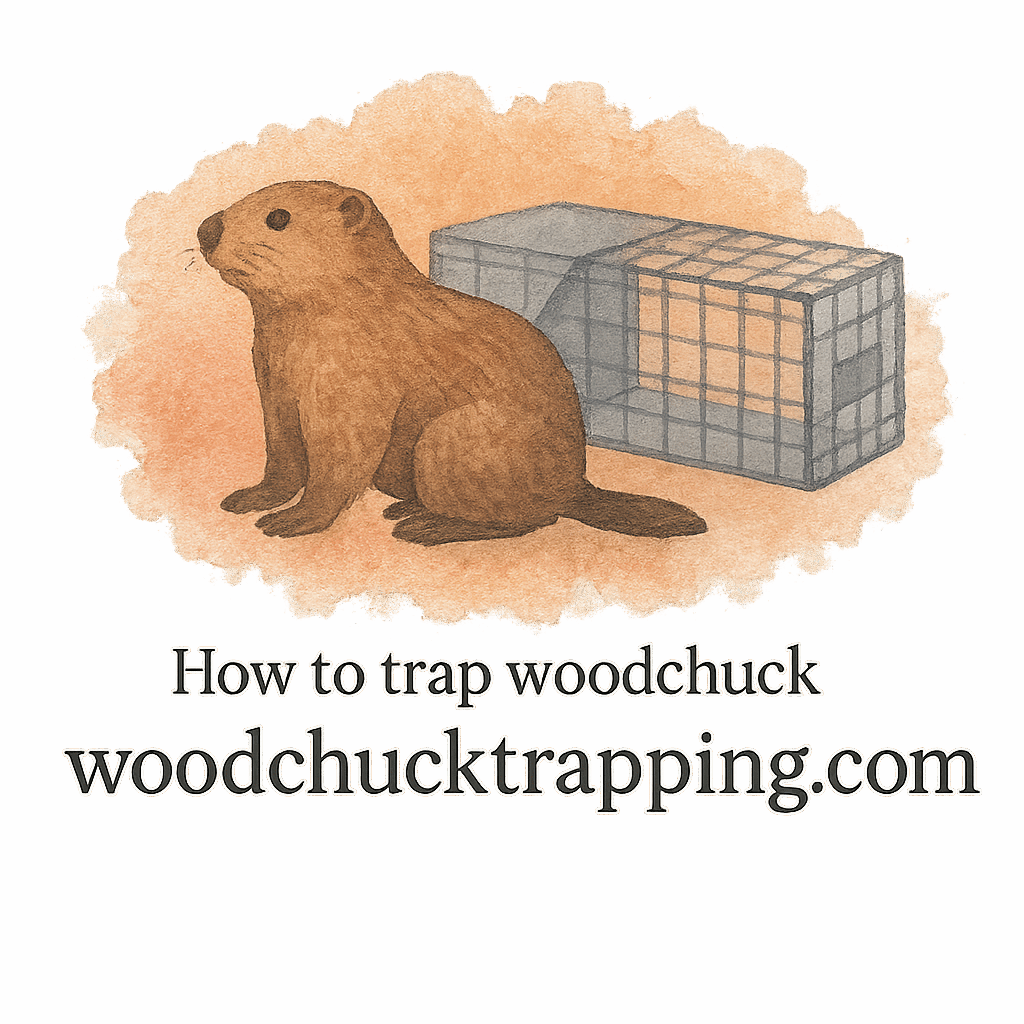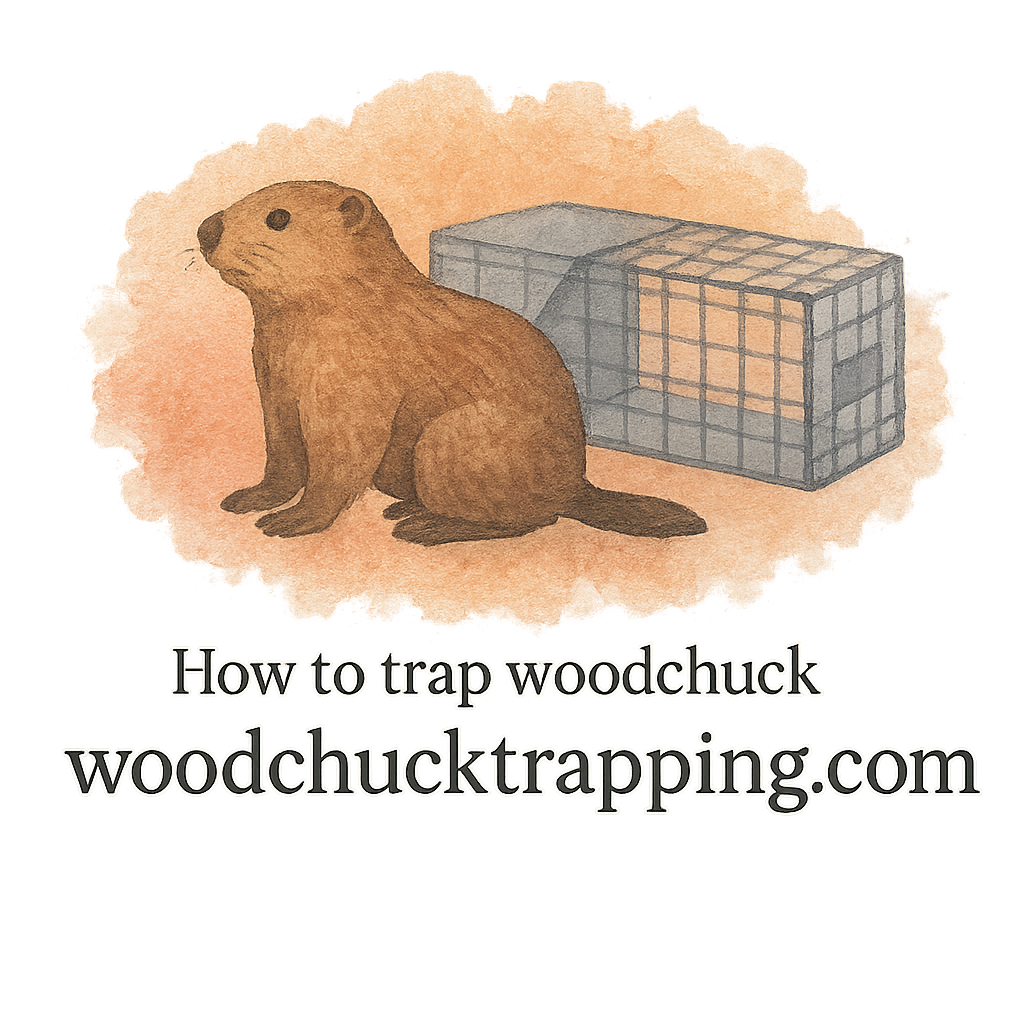Introduction
Flower beds can be a source of pride for any homeowner. But nothing is more frustrating than finding your vibrant blooms chewed down overnight by a hungry woodchuck. These little diggers, also known as groundhogs, are persistent, and once they discover your garden, it becomes their personal buffet. The good news? You don’t need to harm them to protect your flowers. Instead, you can rely on humane woodchuck trapping techniques that balance garden protection with ethical animal treatment.
In this guide, we’ll explore five practical and humane ways to trap woodchucks while ensuring your flower beds stay safe. Along the way, I’ll share expert advice, gear recommendations, and preventative measures so you can stop the damage before it starts.
Understanding the Woodchuck Problem
Woodchucks might look harmless, but when it comes to your flower beds, they can cause major destruction.
Why Woodchucks Target Flower Beds
Woodchucks are herbivores, and your flower beds are like an all-you-can-eat buffet. Fresh blossoms, tender leaves, and lush greens attract them the most. Plus, the soil in flower beds is often soft and perfect for digging burrows. Once they move in, they don’t plan on leaving anytime soon.
Common Signs of Woodchuck Infestation
You might have a woodchuck problem if you notice:
- Burrows with wide, round entrances near your garden (learn more about burrows)
- Freshly gnawed flower stems or missing plants overnight
- Mounds of dirt scattered around the yard
- Trails worn into the grass leading straight to your flower beds
If these signs ring a bell, it’s time to act. (check out signs here)
The Importance of Humane Trapping
Before setting a trap, it’s crucial to understand why humane techniques matter.
Ethics of Wildlife Control
Woodchucks are part of our ecosystem, and while they can be destructive, they don’t deserve cruelty. Humane trapping methods ensure the animal is captured safely, relocated properly, and released without unnecessary stress. This keeps the balance between your garden and the wildlife around it.
Legal Considerations and Safety Rules
Each state has its own regulations for trapping and relocating woodchucks. Some require permits, while others limit relocation distances. Always check local guidelines first (laws & safety guide here).
And remember: safety first! Woodchucks can bite if handled improperly. Wearing protective gloves is non-negotiable.
Preparing for Humane Woodchuck Trapping
Success begins before you even set a trap. Preparation makes all the difference.
Essential Tools and Equipment
Having the right gear ensures a smooth, safe trapping process.
Choosing Compact Traps
Opt for sturdy, compact traps designed for small wildlife. These reduce injury risk and make transport easier. For reviews, check out this equipment guide.
Using Proper Gloves and Handling Gear
Thick trapping gloves protect your hands and mask human scent, which increases trapping success. Other trapping essentials include bait containers, trap covers, and carrying equipment.
Selecting the Right Location
Placing traps near active burrow entrances or along well-worn trails boosts success rates. Avoid placing traps in the middle of your flower beds—woodchucks may get suspicious.

5 Humane Woodchuck Trapping Techniques for Flower Beds
Now let’s dive into the heart of this guide.
Technique 1: Live Cage Trapping with Scent Bait
The classic method involves setting a live trap baited with foods woodchucks love.
Best Baiting and Luring Practices
Use fresh fruits, vegetables, or specialized scent baits. To maximize effectiveness, read this detailed baiting and luring guide. Pro tip: Place bait at the back of the trap so the woodchuck has to step fully inside.
Technique 2: One-Way Exclusion Doors
These devices allow woodchucks to exit their burrow but prevent them from returning. Perfect for situations where you don’t want to relocate them too far, but just encourage them to leave your flower bed zone.
Technique 3: Relocation with Minimal Stress
Once trapped, transport the animal to a safe location following your state’s laws. Use a trap cover to reduce stress during transport (see humane handling tips). Always relocate them near natural food sources.
Technique 4: Humane Burrow Blocking
After relocation, fill in burrows with gravel and soil to discourage re-entry. Just make sure no animal is still inside before blocking! This technique prevents reinfestation near your flower beds (see prevention strategies).
Technique 5: Strategic Trap Placement in Small Yards
For small yard owners, space is limited, so every inch counts. Place traps along fences, near burrow openings, or directly on the trails leading to your flowers. This ensures maximum efficiency even in tight spaces.
Avoiding Common Trapping Mistakes
Even well-intentioned gardeners can slip up.
Misusing Equipment
Using the wrong trap gear can injure the animal or make trapping impossible. Always choose gear suited for woodchucks, not generic small-animal traps.
Ignoring Trap Scent and Placement
Woodchucks have sharp noses. If your trap smells like human hands, they’ll avoid it. Always wear gloves and use natural covers like grass to mask the trap scent.
Preventing Future Yard Damage
Trapping is step one, but prevention ensures lasting results.
Securing Flower Beds Against Infestation
Consider installing fencing around flower beds. Bury part of the fence at least a foot underground to stop burrowing. More prevention tips can be found here.
Using Natural Repellents
Strong-smelling substances like garlic, hot pepper spray, or predator urine can deter woodchucks. While not foolproof, they work well as part of a long-term strategy.
Final Thoughts
Protecting your flower beds doesn’t have to come at the expense of harming wildlife. By using these 5 humane woodchuck trapping techniques, you can safeguard your garden while treating animals ethically. From live cage traps to exclusion doors, the right method depends on your yard setup and personal preferences.
Remember: preparation, proper gear, and prevention are key to long-term success. So the next time a woodchuck sets its sights on your flowers, you’ll know exactly how to handle it—humanely and effectively.
FAQs
1. What is the most effective bait for trapping woodchucks?
Fresh fruits like apples or vegetables like carrots work well. Specialized woodchuck lures and scent baits are even better.
2. Are woodchucks dangerous to handle?
Yes. They can bite and scratch when scared. Always use protective gloves and avoid direct contact.
3. Can I trap woodchucks year-round?
Woodchuck activity slows in winter due to hibernation. The best trapping seasons are spring through early fall.
4. How far should I relocate a trapped woodchuck?
Follow local laws and safety rules. Typically, relocation should be at least 5–10 miles away in a safe habitat.
5. Will trapping one woodchuck solve my problem?
Not always. Woodchucks often live in family groups. Monitor for signs of infestation to be sure the area is clear.
6. What if I don’t want to trap at all?
Consider fencing, repellents, or exclusion doors. These humane techniques prevent trapping altogether.
7. How do I know if the trap I’m buying is right?
Check reviews in the equipment section and make sure it’s labeled for woodchucks. Compact, durable traps are best.


